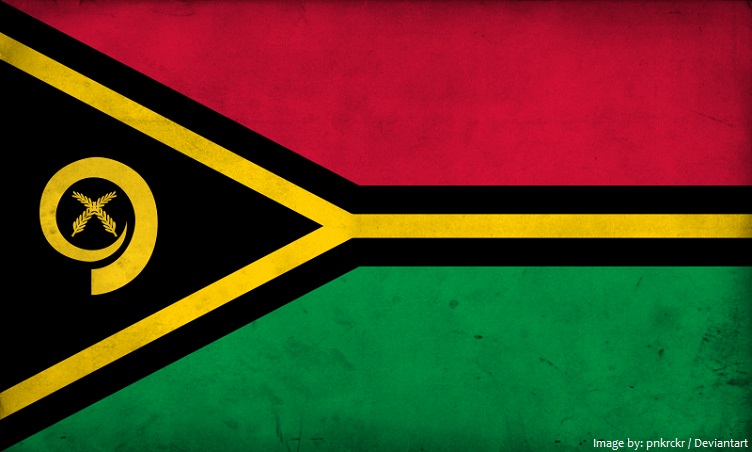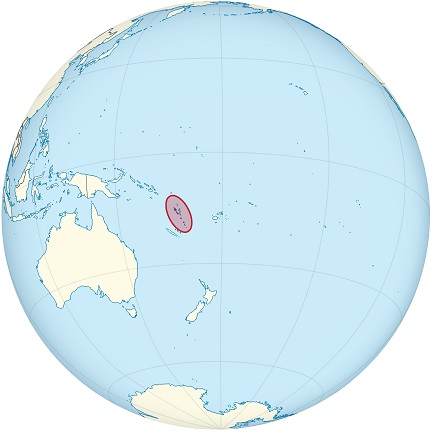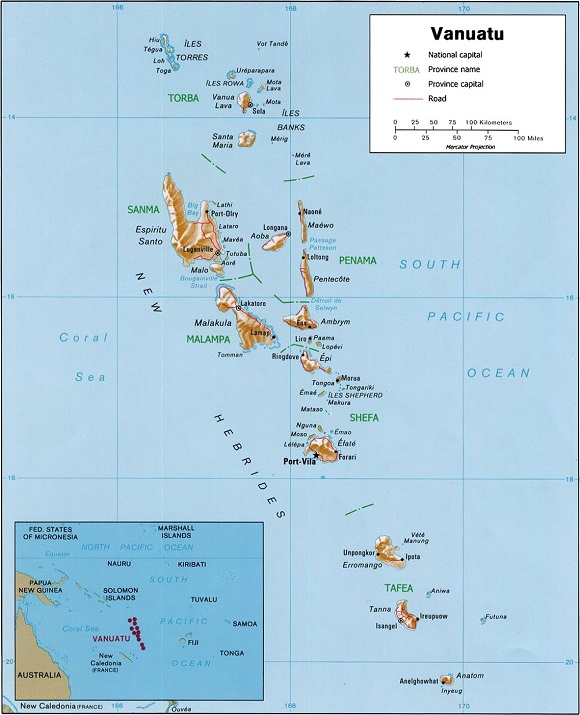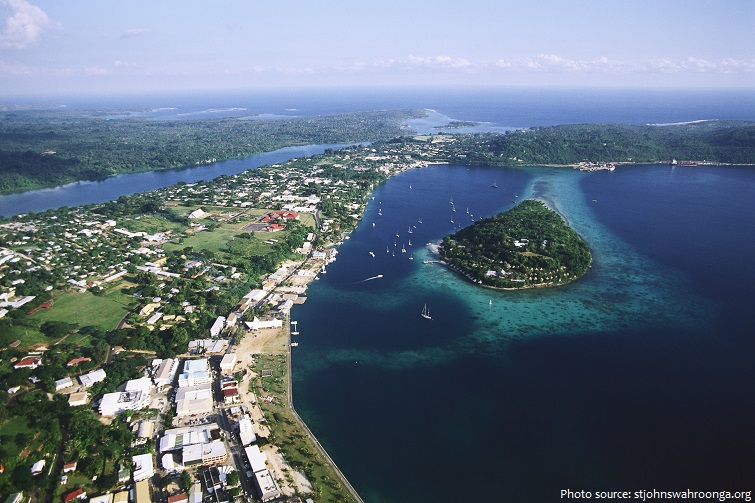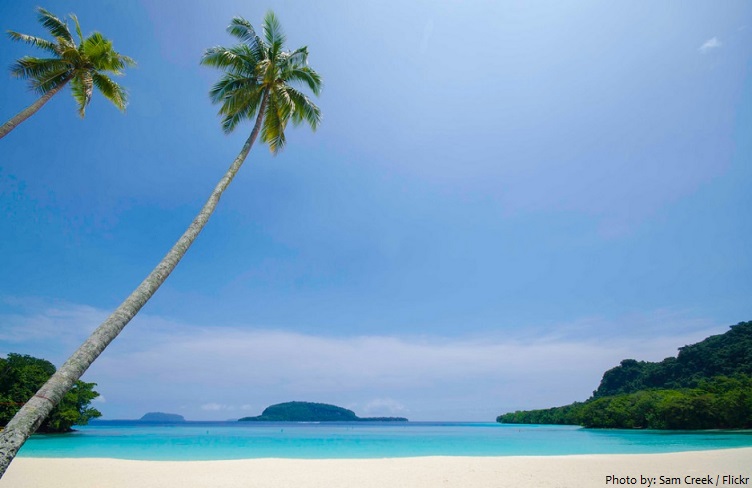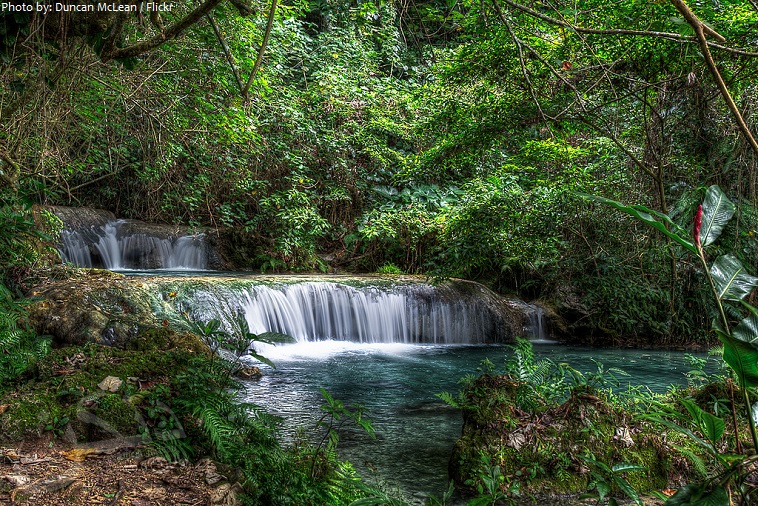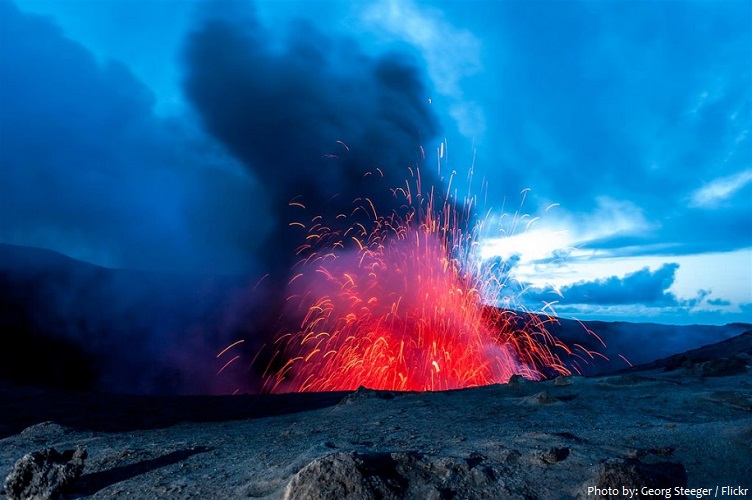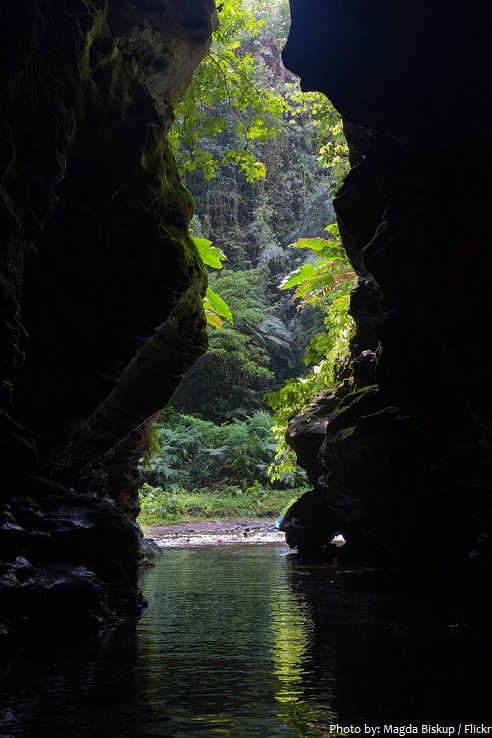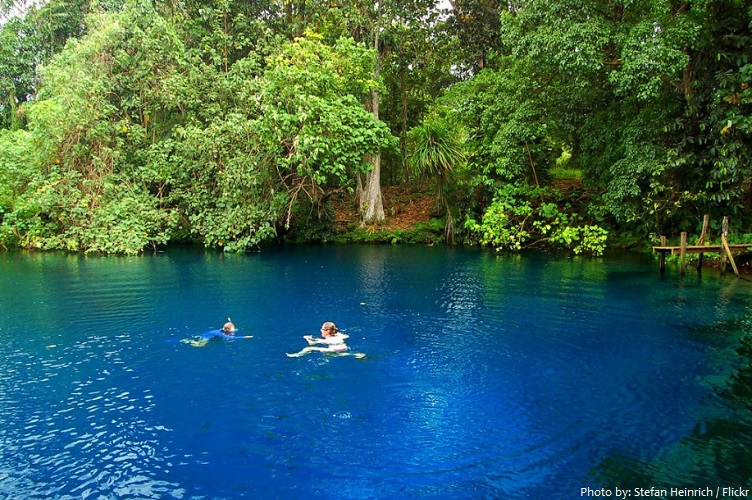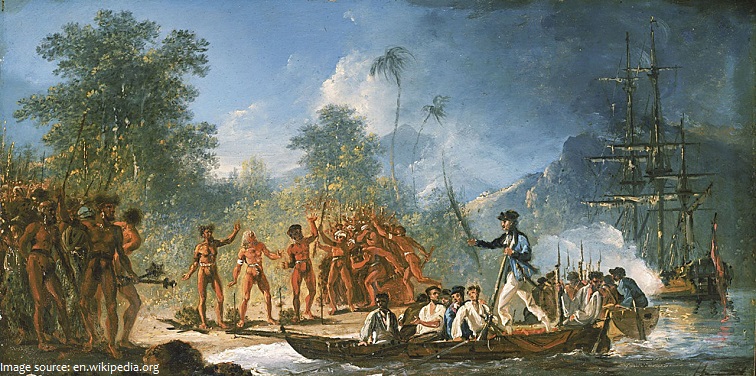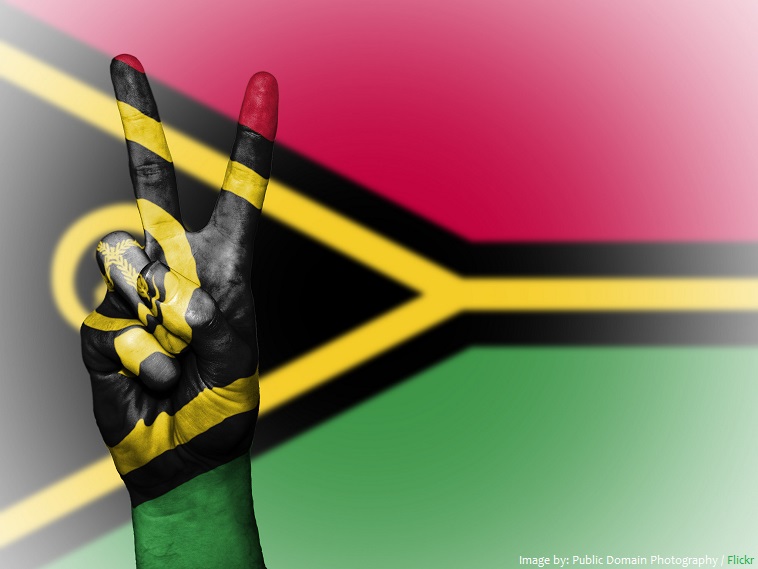Vanuatu is an island country located in the southern Pacific Ocean.
The official name of the country is the Republic of Vanuatu.
Its closest neighbours are New Caledonia (France), Solomon Islands, Fiji, and Tuvalu.
The country is located some 1,750 kilometers (1,090 miles) east of northern Australia.
Vanuatu has 3 official languages: Bislama, English and French.
As of 1 January 2017, the population of Vanuatu was estimated to be 273,755 people.
It is the 157th largest country in the world in terms of land area with 12,189 square kilometers (4,739 square miles).
Vanuatu is an archipelago of made up of 83 small islands of which around 65 are inhabited.
The major islands include Espiritu Santo, the country’s largest island, followed by Malakula, Efate, Erromango, Ambrym, and Tanna.
The country comprises six provinces: Malampa, Penama, Sanma, Shefa, Tafea and Torba.
Port Vila is the capital and largest city of Vanuatu and is located on the island of Efate. It is Vanuatu’s most important harbour and the center of the country’s trade. The international airport, Bauerfield International is also located in the city.
Vanuatu is a mountainous archipelago of volcanic origin with narrow coastal plains.
Mount Tabwemasana is the highest mountain in Vanuatu at 1,879 meters (6,165 feet) above sea level.
The coastline of the islands total 2,528 kilometers (1,571 miles) in length.
Vanuatu beaches are renowned for their soft white sand, golden sun kissed glow, fascinating coral deposits and sparkling turquoise waters ideal for snorkelling and swimming.
Mele Cascades is popular and photogenic swimming spot about 10 kilometers (6 miles) from Port Vila. A series of clear aquamarine pools terrace up the hillside, culminating in an impressive 35 meters (115 feet) waterfall flowing into a natural plunge pool. A slippery path with guide ropes directs you to the top.
Located on Tanna Island, Mount Yasur is perhaps one of the most famous Vanuatu attractions. It is one of the most active volcanoes in the world, erupting at least for several centuries. An active volcano measuring 361 meters (1,184 feet) above sea level.
The famous Millenium Cave is located at Espiritu Santo island. This massive cave stretches 20 meters (65 feet) across and some 50 meters (165 feet) high. A bamboo bridge will take you from the mouth of the cave down to the crystal clear pool fed by a small cascade. From here you will journey through a magical realm of sparkling stalactites and stalagmites, with fresh water pools and thousands of tiny bats and swallows, their homes made high up in the roof of the cave.
The most spectacular blue holes on the planet can be found on Espiritu Santo. The awe-inspiring blue holes which are a naturally-formed swimming hole with almost magical brilliant blue waters caused by fresh water springs rising through limestone.
Archaeological evidence indicates that, by 1300 BC, islands in northern Vanuatu had been settled by people of the Lapita culture from Melanesian islands to the west.
The first island in the Vanuatu group discovered by Spaniards was Espiritu Santo when, in 1606, the Portuguese explorer, Pedro Fernandez de Quirós, spied what he thought was a southern continent (Australia).
Europeans did not return until 1768, when Louis Antoine de Bougainville rediscovered the islands. In 1774, Captain Cook named the islands the New Hebrides, a name that would last until independence in 1980.
These islands were used for cotton, coffee, and coconut cultivation, and other cash crops. The Melanesian people who inhabited the islands were oppressed and not allowed the same rights as the colonists. The French and British ruled jointly until the community of Franceville claimed independence in 1889.
In 1906, France and the United Kingdom agreed to administer the islands jointly.
During World War II the U.S. launched attacks from here against Japanese troops in the Solomon Islands and New Guinea, inspiring James Michener’s Tales of the South Pacific.
An independence movement arose in the 1970s, and the Republic of Vanuatu was founded in 1980.
Vanuatu’s name is derived from the word vanua (“land” or “home”), which occurs in several Austronesian languages, and the word tu (“stand”). Together the two words indicated the independent status of the new country.
The four mainstays of the economy are agriculture, tourism, offshore financial services, and raising cattle. There is substantial fishing activity, although this industry does not bring in much foreign exchange. Exports include copra, kava, beef, cocoa and timber, and imports include machinery and equipment, foodstuffs and fuels. In contrast, mining activity is unsubstantial.
The climate is tropical, with about nine months of warm to hot rainy weather and the possibility of cyclones and three to four months of cooler, drier weather characterised by winds from the southeast. The daily temperature ranges from 20 to 32 °C (68 to 90 °F).
The tropical climate and fertile soils support a wide range of flora from tropical rainforests to thick natural vegetation including grassland and secondary growth. More pristine areas can contain as many as 1500 species of flowers, ferns, shrubs, vines and trees.
Wildlife includes the native flying foxes, land and sea birds (more than 100 species), dolphins, whales and sea turtles and dugongs (sea cows).
There are also more than 4,000 species of marine molluscs and a large diversity of marine fishes.
